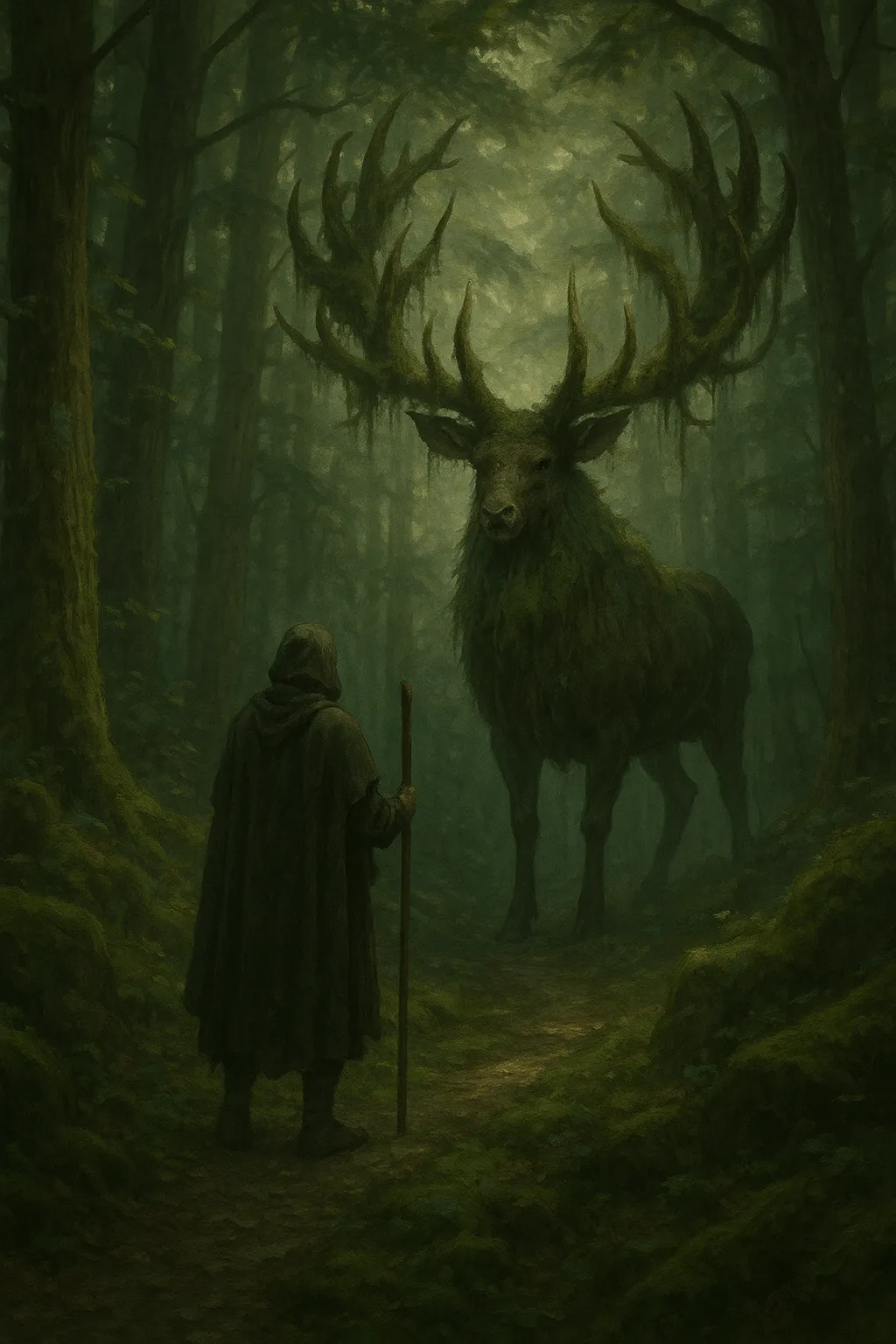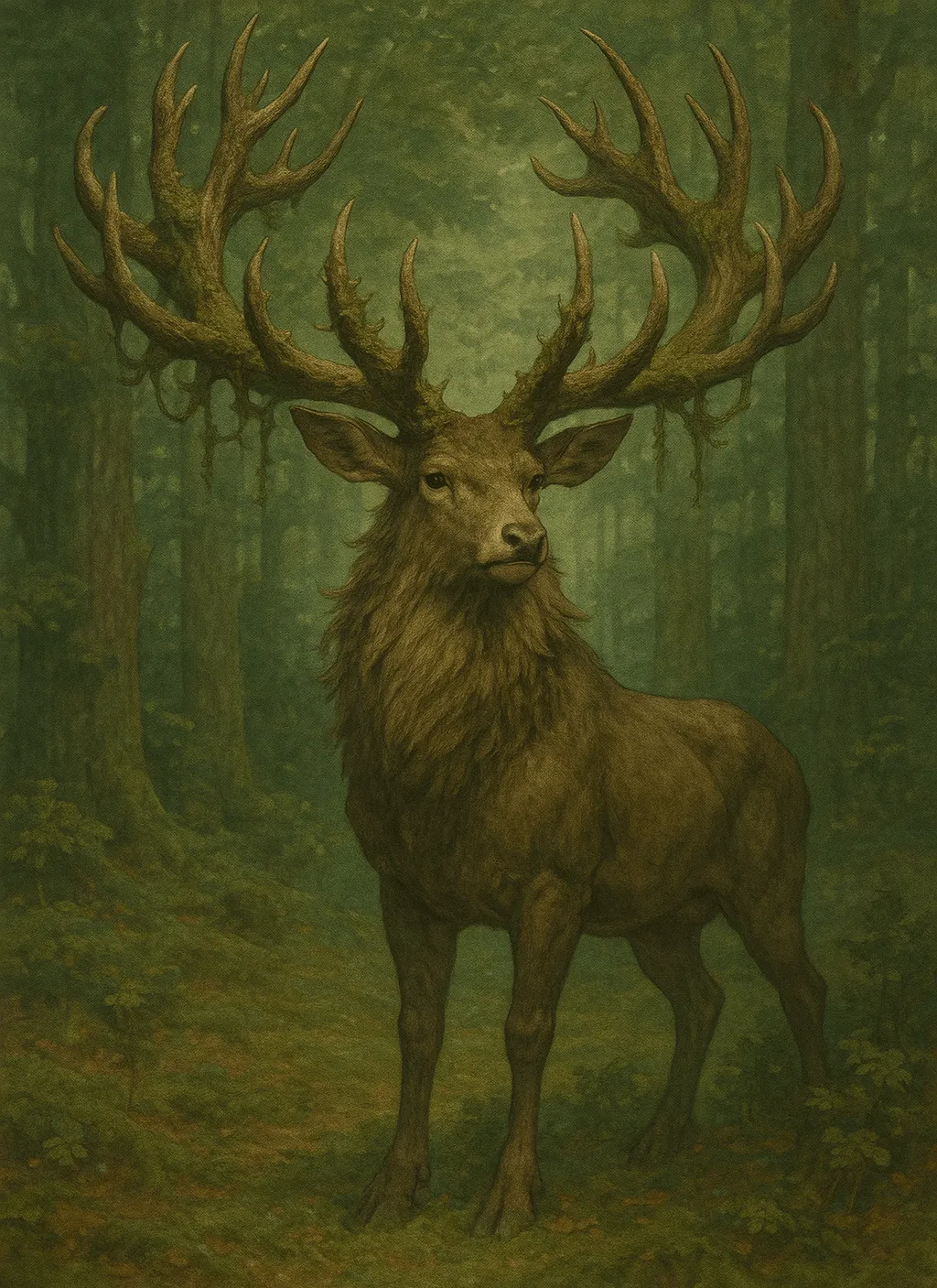
To druids, the Great Antlerlord is a symbol of ancient continuity.
Among the deepest groves and undisturbed forest hollows, there walks a creature known in hushed tones and carved glyphs as the Great Antlerlord. While, by all known measures, it is but a stag — an immense cervid of the old bloodlines — its presence holds a weight that defies ordinary classification. It is not the first of its kind, nor likely the last, yet stories speak of it as if it has always been there. No name is older, and none is needed.
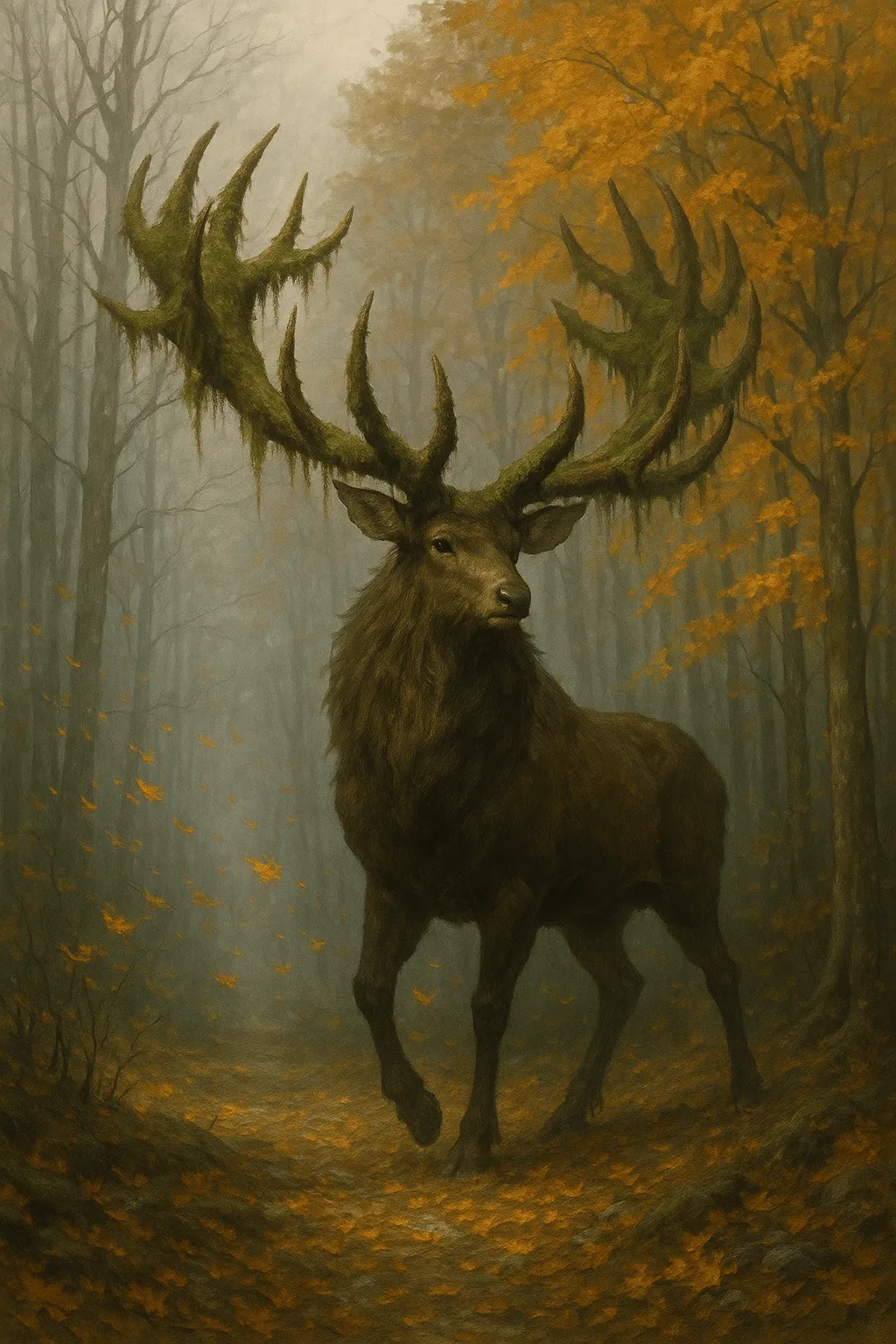 Towering and broad-antlered, the Antlerlord bears a crown of tines so vast and interwoven with moss, bark, and bramble that some mistake it for a mobile thicket. Lichens cling to its antlers like ancient runes, and fallen leaves gather in the hollows of its back. Its coat shifts in color with the seasons — russet in autumn, ash-gray in winter, golden-dappled in spring — not through magic, but through the subtleties of nature and age. Observers note that its hooves never seem to break the ground too harshly, and that the animals of the forest give way without fear, as if recognizing a higher order.
Towering and broad-antlered, the Antlerlord bears a crown of tines so vast and interwoven with moss, bark, and bramble that some mistake it for a mobile thicket. Lichens cling to its antlers like ancient runes, and fallen leaves gather in the hollows of its back. Its coat shifts in color with the seasons — russet in autumn, ash-gray in winter, golden-dappled in spring — not through magic, but through the subtleties of nature and age. Observers note that its hooves never seem to break the ground too harshly, and that the animals of the forest give way without fear, as if recognizing a higher order.
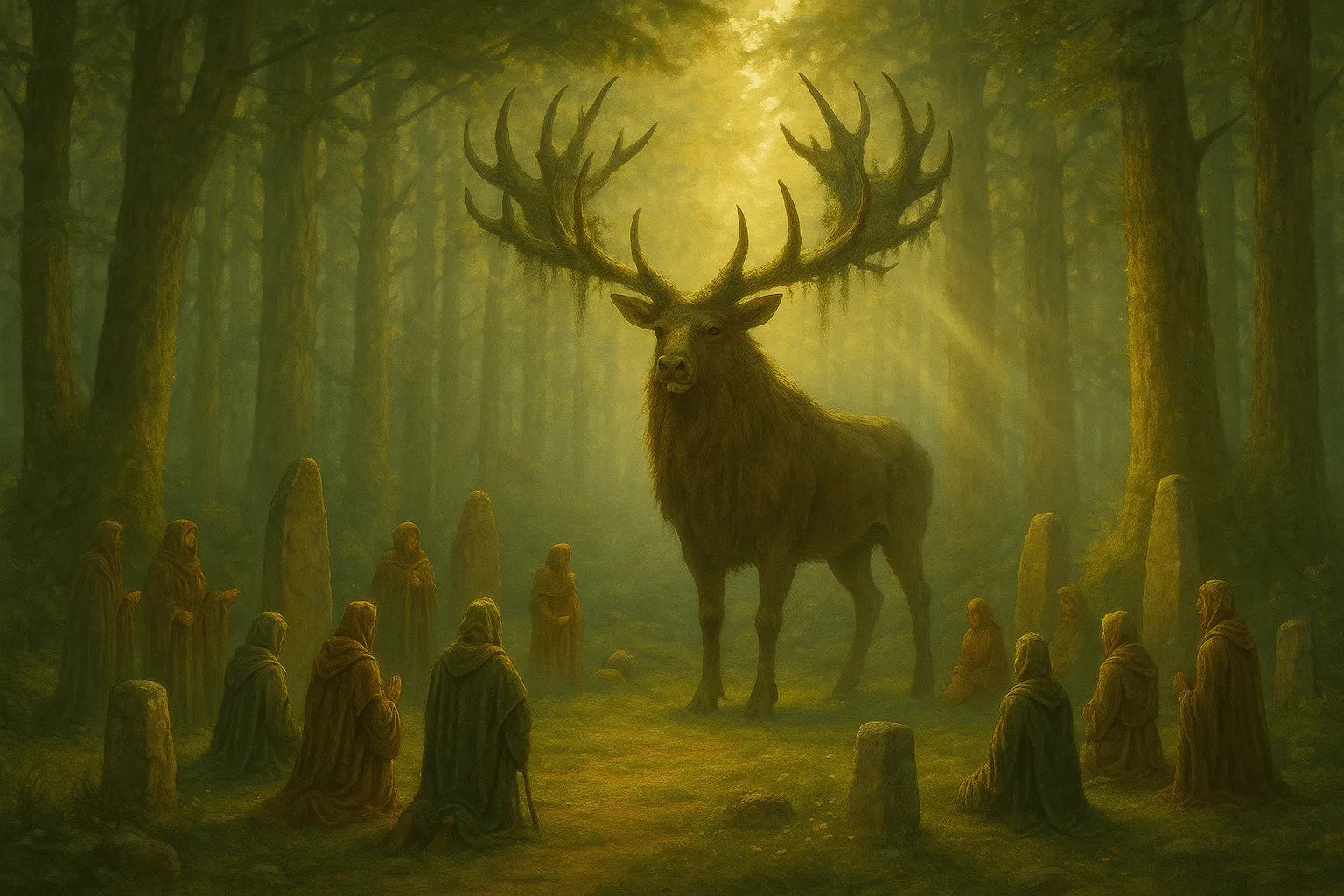 In druidic circles, the Great Antlerlord is a symbol of ancient continuity — a beast that walks between the cycles of growth and decay, always present where the forest remains unbroken. To glimpse it is said to mark a turning of the path: a long journey beginning or ending, a life entering or leaving the weave. Some speak of encounters as dreamlike, with the air thick and slow, the sounds of the forest hushed. Though it speaks no words, many who witness it claim to feel a knowing — not language, not thought, but the kind of understanding one gets from rain, or fire, or the falling of a great tree.
In druidic circles, the Great Antlerlord is a symbol of ancient continuity — a beast that walks between the cycles of growth and decay, always present where the forest remains unbroken. To glimpse it is said to mark a turning of the path: a long journey beginning or ending, a life entering or leaving the weave. Some speak of encounters as dreamlike, with the air thick and slow, the sounds of the forest hushed. Though it speaks no words, many who witness it claim to feel a knowing — not language, not thought, but the kind of understanding one gets from rain, or fire, or the falling of a great tree.
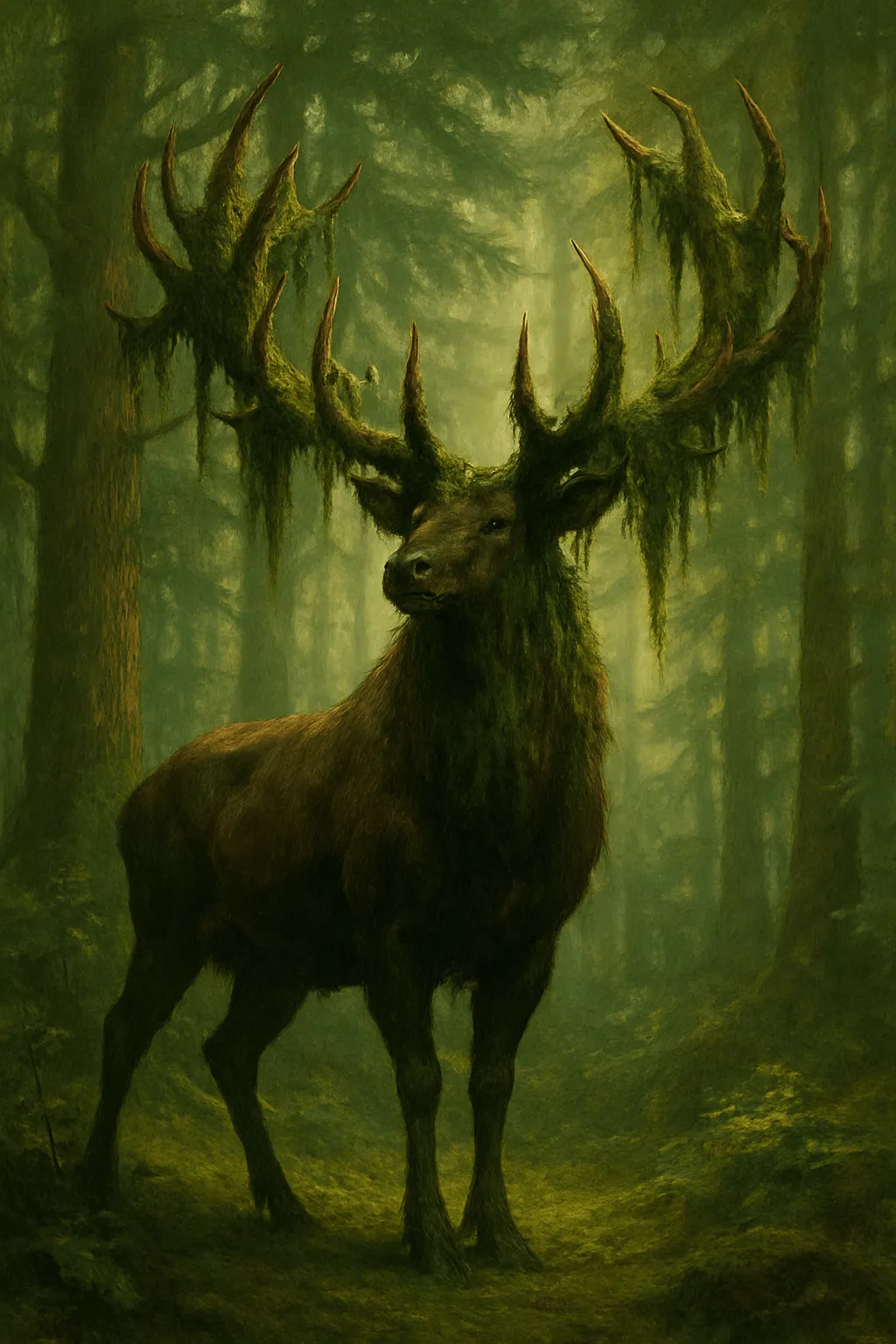 Despite its awe-inspiring size, the Antlerlord is not known for aggression. It is wary, solitary, and intensely difficult to track. Its routes seem patterned by a rhythm older than memory — passing through groves of ash and elm only on solstices, grazing in high clearings where old stones stand. Even its footprints seem to vanish after a time. Some foresters leave offerings at these crossings: antler-carved tokens, salt licks, or bells hung from cedar branches, hoping for favor, or at least respect. A few speak of hearing the low breath of the beast in the dark, or seeing its shape in the mist — always just out of reach, always moving on.
Despite its awe-inspiring size, the Antlerlord is not known for aggression. It is wary, solitary, and intensely difficult to track. Its routes seem patterned by a rhythm older than memory — passing through groves of ash and elm only on solstices, grazing in high clearings where old stones stand. Even its footprints seem to vanish after a time. Some foresters leave offerings at these crossings: antler-carved tokens, salt licks, or bells hung from cedar branches, hoping for favor, or at least respect. A few speak of hearing the low breath of the beast in the dark, or seeing its shape in the mist — always just out of reach, always moving on.
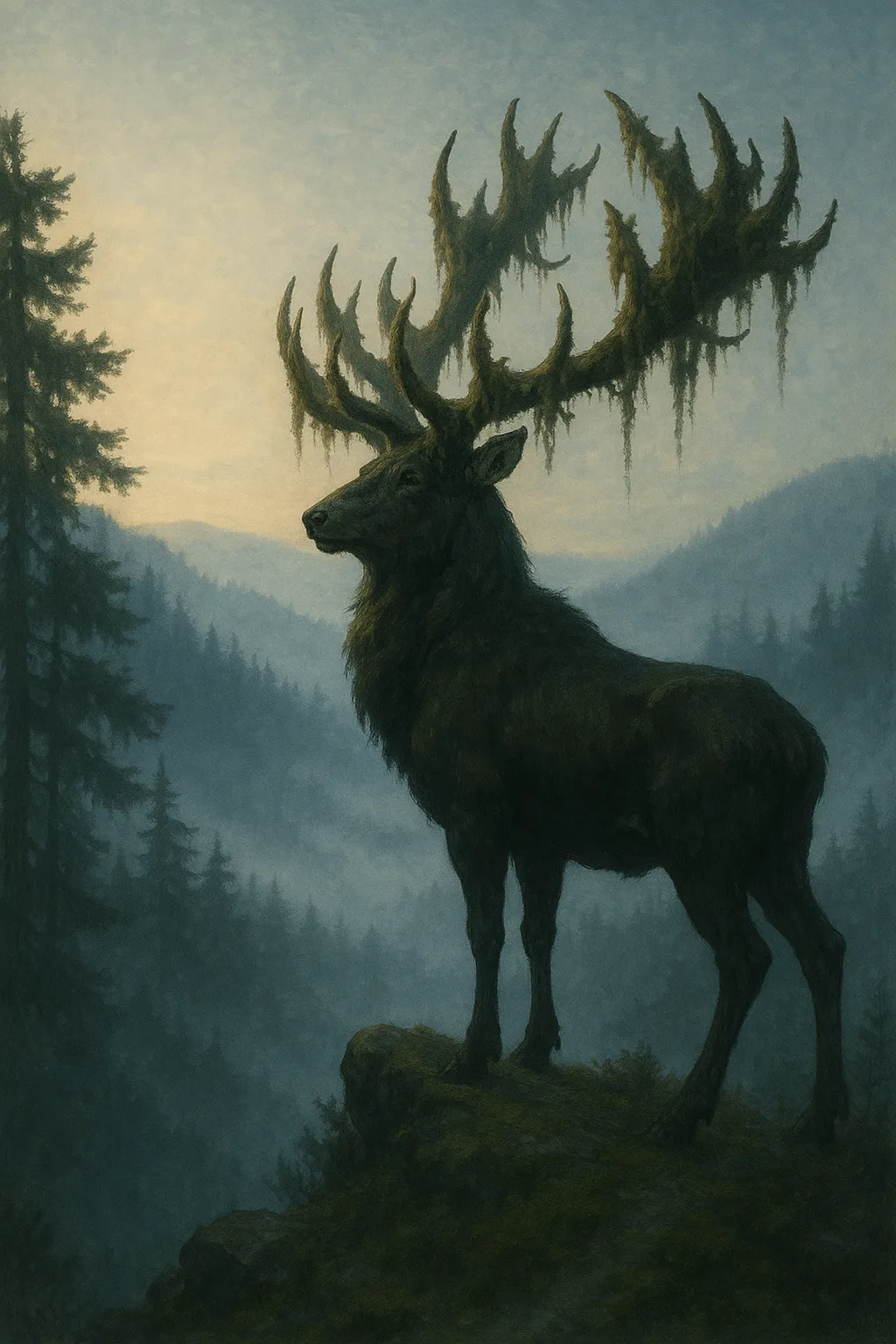 No verifiable account of its death exists. Some claim the Great Antlerlord does not die, but returns to the earth, its form reabsorbed into root and soil, only to rise again when the forest deems it necessary. Others say that “Antlerlord” is not a singular being at all, but a title passed from one elder stag to the next in an unbroken lineage of guardianship — not through ritual, but through survival and weight of presence. In either case, the effect is the same: it endures beyond any one lifetime.
No verifiable account of its death exists. Some claim the Great Antlerlord does not die, but returns to the earth, its form reabsorbed into root and soil, only to rise again when the forest deems it necessary. Others say that “Antlerlord” is not a singular being at all, but a title passed from one elder stag to the next in an unbroken lineage of guardianship — not through ritual, but through survival and weight of presence. In either case, the effect is the same: it endures beyond any one lifetime.
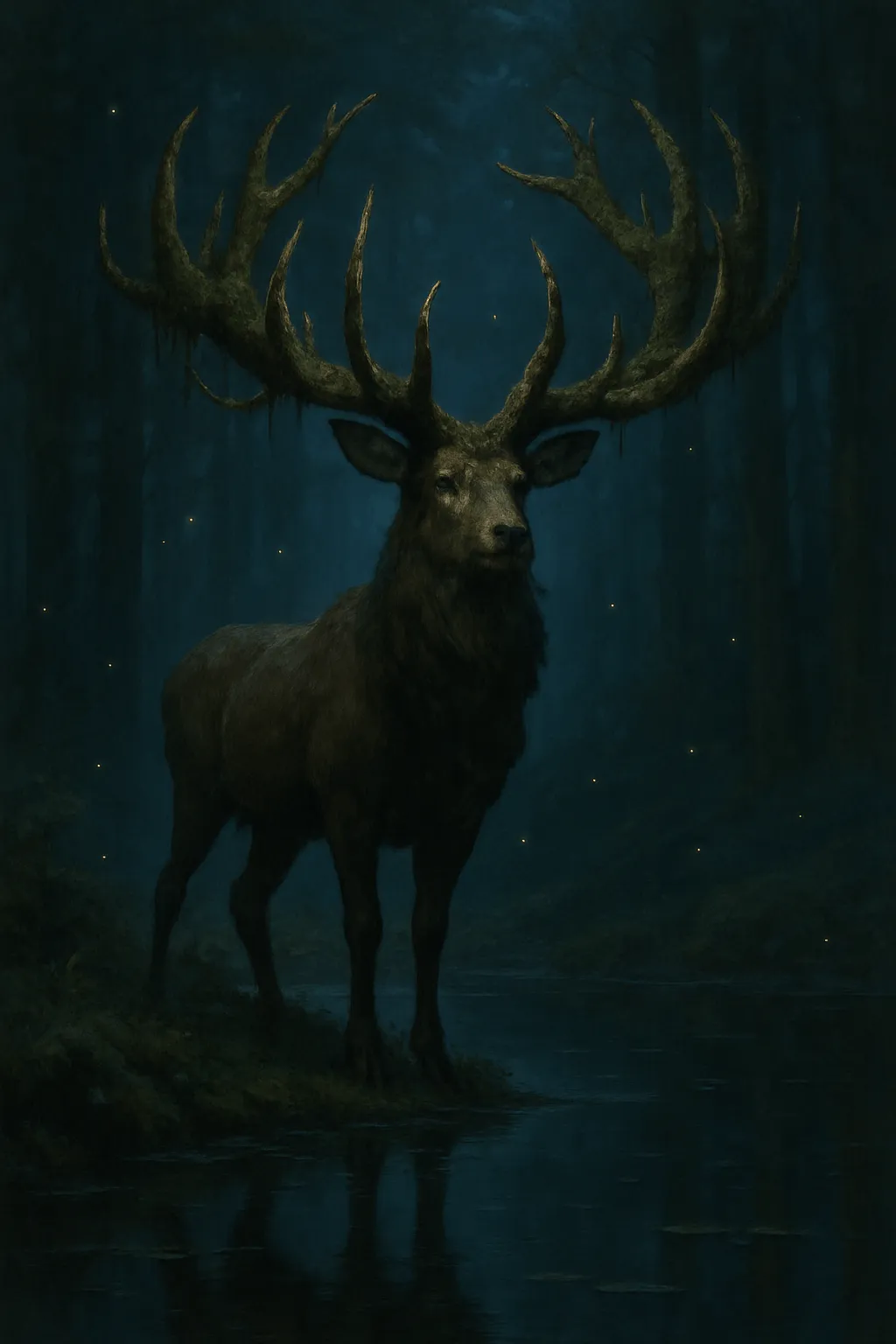 Whether myth or misunderstood reality, the Great Antlerlord persists — a beast of no magic and yet all meaning, whose silent tread stirs something ancient in the hearts of those who still remember how to listen. In a world where old paths fade and seasons turn unnoticed, it is a reminder that some cycles still hold.
Whether myth or misunderstood reality, the Great Antlerlord persists — a beast of no magic and yet all meaning, whose silent tread stirs something ancient in the hearts of those who still remember how to listen. In a world where old paths fade and seasons turn unnoticed, it is a reminder that some cycles still hold.
The following magical heirlooms are fictional and lore-based in nature. Each one is an affiliate link to a real-world item on Amazon that we've hand-selected to complement this artifact's lore.
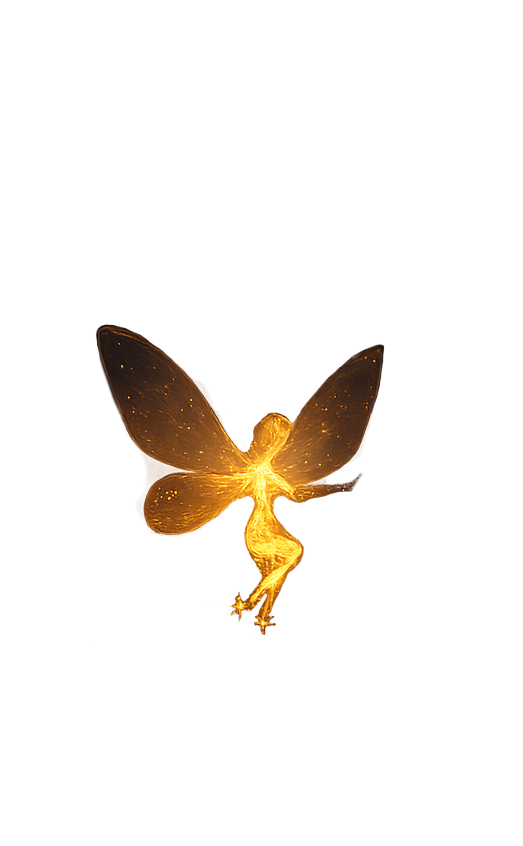
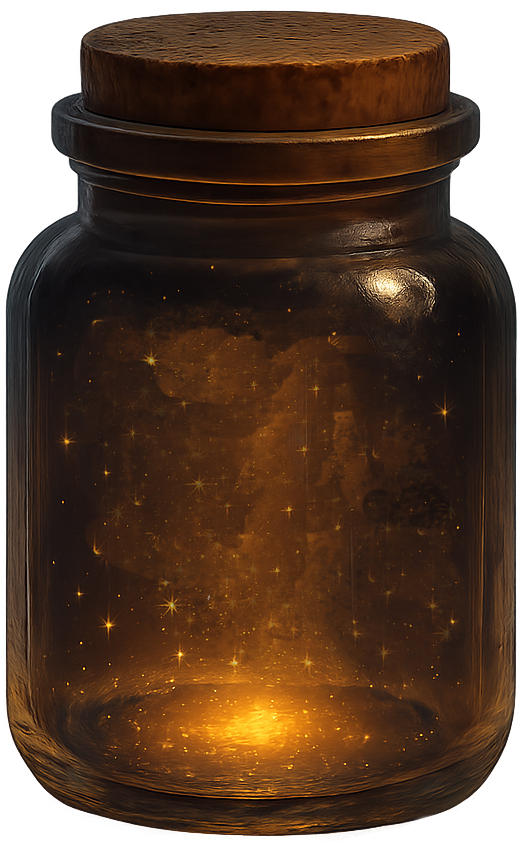
If you click a link and buy an item, we may earn a commission.It costs you nothing extra, but can help keep this little corner of the internet glowing.
What does this mean?
Know the sky's secrets before the wind dare speak them.

A floating faucet that never runs out of water. Some say the other end of it is at the bottom of an ocean.
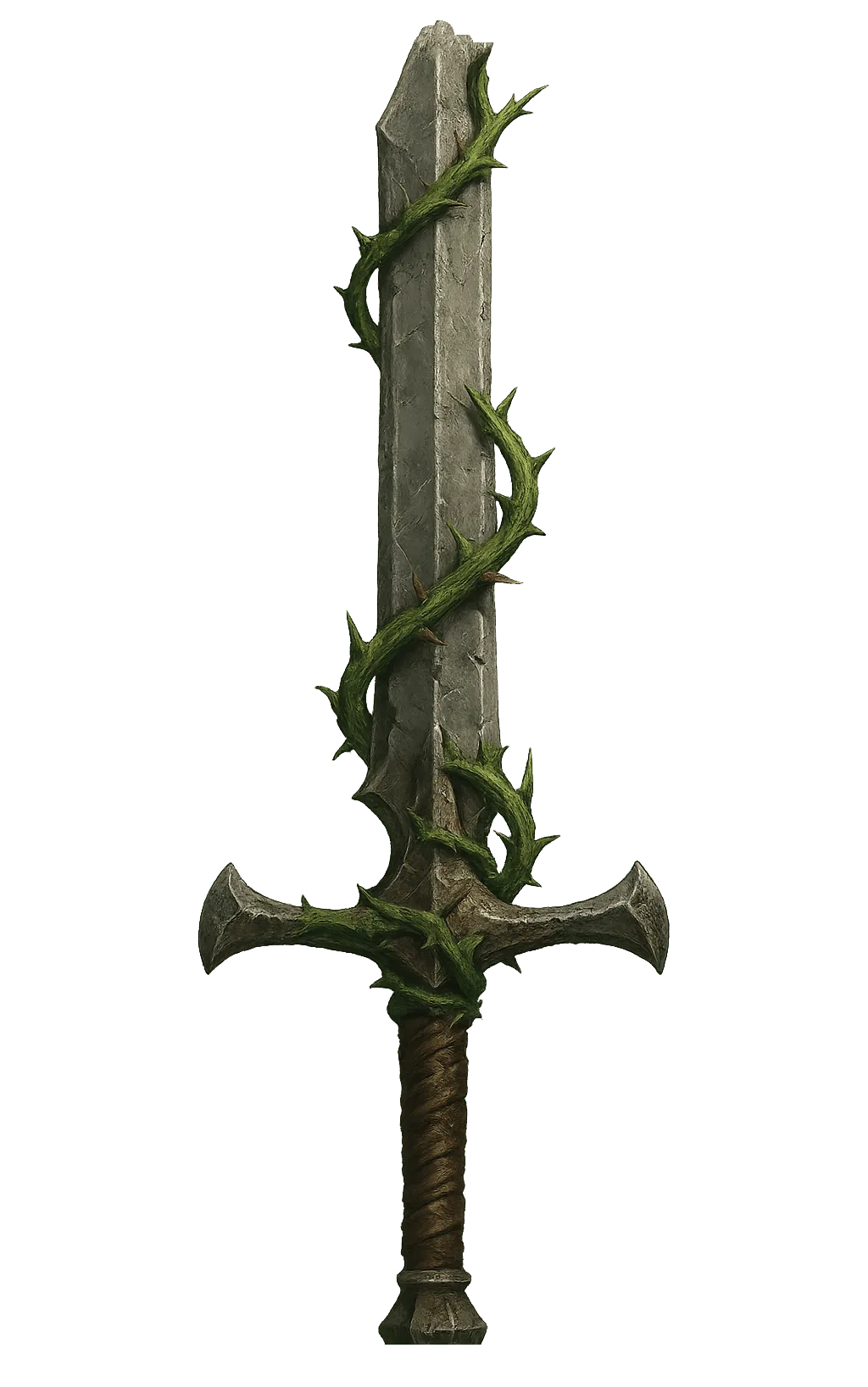
Favored armament of many keepers of the grove for centuries, to defend from any who would threaten the balance.

This cracked emerald monocle nullifies petrification—but only for the first four glances; after that, it politely ceases to intervene.





